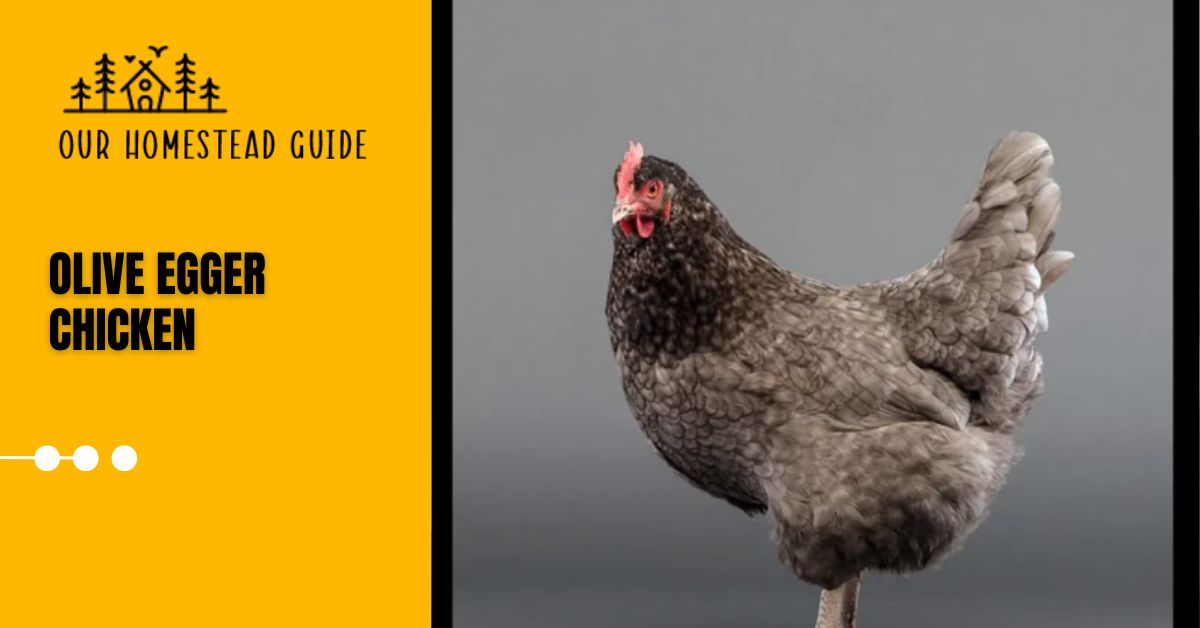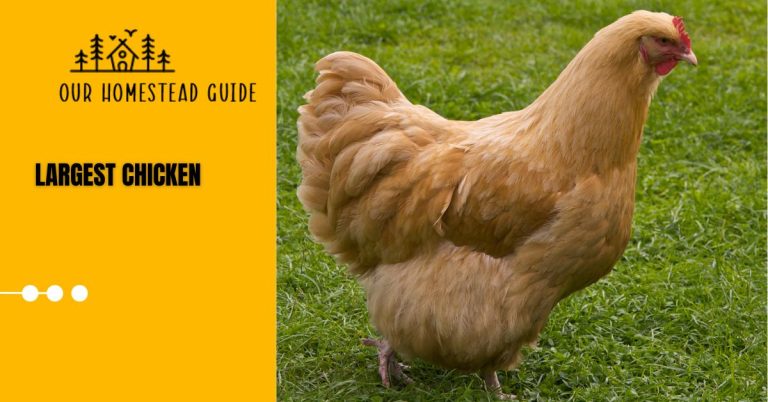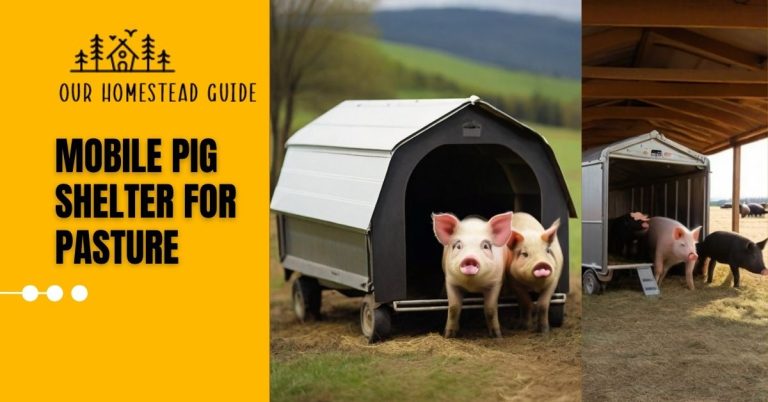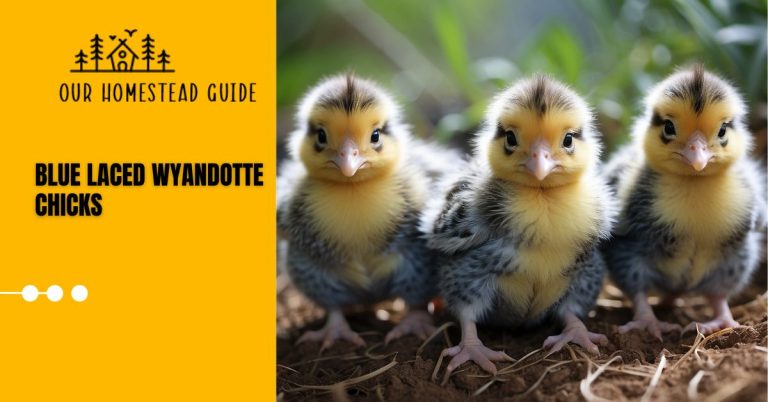Olive Egger Chicken: Appearance, and Care Complete Guide
An Olive Egger chicken is a popular hybrid breed. The breed name comes from its unusual olive-colored green eggs, which are highly prized. Purebred hens are more dependable than hybrids, but hybrids may still be excellent friends and egg producers. While a little more difficult to find, many keepers find that olive eggers are well worth the effort.

So, are you ready for an Oliver Egger? To assist you in making a decision, let’s examine their care, disposition, and looks. The Olive Egger breed of chickens is amiable and submissive.
Olive Egger Chicken Overview
| Feature | Description |
|---|---|
| Origin | United States |
| Size | 6-8 lbs |
| Comb Type | Pea comb |
| Primary Use | Dual-purpose (egg laying and meat) |
| Egg Production | Excellent |
| Egg Size | Extra large |
| Egg Color | Heat and cold-resistant |
| Eggs per Week | 3-4 |
| Eggs per Year | 140-200 |
| Temperament | Docile, friendly, and good flock mates |
| Broodiness | Rarely broody |
| Climate Tolerance | Heat and cold resistant |
| Noise Level | Fairly quiet |
| Lifespan | 7-8 years |
| Special Notes | Not a recognized breed, but a popular hybrid |
What is an Olive Egger Chicken Mixed with?
Olive Egger chickens are a hybrid created via the crossing of two existing breeds that share certain traits related to egg-laying, rather than being a distinct breed in and of itself. Breeds most frequently utilized to produce Olive Eggers are:
Layers of blue eggs:
Ameraucana: Distinguished by its characteristic “muff” and “beard” of feathers, and by producing blue eggs.
Araucana: Has no comb at all or a pea comb, and produces blue eggs as well.
Cream Legbar: Has the “blue egg gene” and lays pale blue eggs.
Layers of dark brown eggs:
Marans are distinguished by their dark brown, rich eggs.
Welsummer: Speckled, dark brown eggs are laid.
The Island Republic Red: Medium brown eggs are laid.

The precise egg color of an Olive Egger depends on the breeds utilized to produce them. Eggs produced by crossing an Ameraucana with a Marans, for instance, will usually be olive-green, but eggs crossed with a Welsummer and a Cream Legbar may be blue-green or speckled. Here are a few particular instances of well-known Olive Egger crosses.
- Marans x Ameraucana: Olive-green eggs.
- Welsummer x Ameraucana: flecked blue-green eggs.
- Marans x Cream Legbar: Olive-green, dark eggs.
- Easter Egger x Island of Rhode Red: Brownish-green eggs.
| Step | Description |
|---|---|
| 1 | Recognize Uniqueness: Acknowledge that the Olive Egger chicken is a unique breed known for its attractive and productive qualities. |
| 2 | Appreciate Color Combination: Understand the distinctive combination of dark and light tones that give the Olive Egger an eye-catching appearance. |
| 3 | Note Coloration: Recognize the specific coloration, including light olive green on the neck and wings, deep chocolate brown on the back and top of the head, pinkish hue on the legs, and a deep red comb. |
| 4 | Understand Hybrid Origin: Learn that Olive Egger chickens are a hybrid breed resulting from crossing an Ameraucana and an Easter Egger. |
| 5 | Unique Egg Laying: Understand the uniqueness of Olive Eggers in laying eggs of various colors, such as blue, green, and pink. |
| 6 | Egg Color Range: Note that they typically lay bluish-green eggs, ranging from light olive green to deep Olive Brown. |
| 7 | Suitability for Backyard Flocks: Recognize that Olive Egger chickens are a good choice for backyard flocks due to their hardiness, activity, and quiet, docile temperament. |
| 8 | Egg Production: Acknowledge their high egg production, averaging four eggs per week, making them an excellent source of fresh eggs. |
| 9 | Low Maintenance: Understand that Olive Eggers are low-maintenance chickens, requiring minimal space and special care. |
| 10 | Adaptability to Small Flocks: Note that they can be kept in small flocks, making them easy to care for. |
| 11 | Cold Hardy Nature: Recognize their ability to tolerate colder temperatures without much difficulty. |
| 12 | Ideal for All Chicken Keepers: Conclude that Olive Egger chickens are ideal for both beginner and experienced chicken keepers, offering a combination of hardiness, productivity, and unique appearance. |
Olive Egger Chicken Breed History
Even though Olive Eggers aren’t officially recognized as a breed, they have a fascinating past:
Early Beginnings (1842):
In Chile, where the Araucana breed originated, the earliest known accounts of breeding for green eggs date to 1842. It’s thought that Araucanas were originally mated with dark brown egg-laying hens to produce olive-colored eggs since they have a special gene that makes them able to lay blue eggs.
As popular as ever in the early 20th century:
In an attempt to create green-egg layers, American breeders started experimenting with crossbreeding in the early 1900s. Ameraucanas, Marans, Welsummers, and Cream Legbars were among the most popular options.
The primary objective of these crosses was to produce green eggs with desirable traits including good egg-laying capacity, calm temperament, and resilience to heat and cold.
Growing Demand (Late 20th Century):
Because of their distinctive egg color, kind disposition, and high egg production, Olive Eggers had become rather popular among backyard chicken aficionados by the late 20th century.
The increased research and improvement of the breeding lines brought about by the demand for Olive Eggers produced hens with more predictable traits and consistently colored eggs.
Contemporary Olive Eggers:
Even in modern times, many chicken keepers continue to like Olive Eggers. The American Poultry Association (APA) has yet to officially acknowledge them as a breed, however, they are well known to be a hybrid with dependable characteristics.
Breeders are working to improve the size, general health, and vitality of the eggs as well as the uniformity of the egg color in the Olive Egger lines.
Interesting Information:
Although “Olive Egger” is not an officially recognized name by any poultry organization, breeders and backyard chicken keepers have come to accept and utilize it.
Olive Eggers’ distinct attractiveness is enhanced by the vast range of feather colors and patterns that may be seen on them because of their hybrid origin.
Olive Eggers are a tribute to the inventiveness and commitment of poultry breeders who persist in their pursuit of distinctive and appealing characteristics in chickens, even if they are not formally recognized as a breed.
Appearance at Each Life Stage
Olive Eggers are stunning birds, yet their appearance varies. Here’s how they should look in general from egg to maturity.
Olive Egger Chicken Egg Color
Olive Green is the typical color of Olive Egger chicken eggs. However, they can also appear in different green hues, such as bright or dark green. These medium-sized to big eggs seldom have any other hue, however, a few can turn out to be brown or blue.
Adult Appearance

Like with chicks, this hybrid’s mature appearance is largely influenced by the appearance of its parents. Their feathers are often darker, like gray, brown, or black. They could also get additional distinctive characteristics from the parent breeds, such muffs.
You will already be able to identify hens from roosters when they are still chicks. But, you’ll also note that the females will grow feathers more quickly than the males as your chicks become older. The males will eventually grow to be bigger than the girls when they are adults.
Males and females might differ greatly in their physical attributes. Therefore, you might want to go for a purebred bird instead if you’re searching for birds with a certain appearance.
Olive Egger Chicks
Feathers on an Olive Egger chick are often darker than those on other chicks. They have a lot of dark brown and black feathers instead of soft yellow ones. Nonetheless, the parents’ color can affect the color of the offspring.

From the moment they hatch, hens and roosters may be distinguished from one another. Whereas female chicks lack the white dot on their heads, males do.
The chicks will begin to resemble their adult selves as they mature into pullets. Pullets come in a variety of hues, and they resemble smaller, less fluffy adult Olive Eggers in most cases.
Chicken Size Olive Egger
The weight of these birds is roughly average. The most frequent hen weight is 6.5 pounds, however, they can weigh up to 7 pounds. Then, roosters weigh 7 to 8 pounds, with 7.5 being the average.
Olive Egger Chicken Temperament
The majority of Olive Eggers are placid and kind. However, unlike purebred chickens, their dispositions aren’t as predictable because they might be a mix of many kinds. Thus, although some of your hens may thrive in social situations, others may be more reserved and lonely.
To best predict the temperament of the chick, take into account the parents’ dispositions. The likelihood of the chicks being amiable and laid back increases if both parents exhibit these traits. It is simple to find out this information if you breed your chickens. However, before taking chicks home, make sure you ask a lot of information if you visit a breeder.
gloominess
Indeed, these hybrids have the potential to be brooding, but much like their disposition, this is inherited. Many Olive Eggers are broody since most of the breeds from which they originate have broody hens.
You can have eggs incubated for you by a broody hen, but if you try to remove the eggs from her, she may become more hostile. Therefore, before taking care of these mixed-breed chickens, do some study on broody hen care.
Noise Levels
These birds are not particularly noisy, but they do produce a lot of the usual sounds made by chickens. Every chicken in the coop talks to one another, yet each one’s level of conversation varies.
It’s usually advisable to go with a breed that is more likely to be quiet if you live near to your neighbors. You never know if a hybrid will bother your neighbors or not.
Do They Get Along with Other Birds?
Because of their calm and amiable nature, olive eggers make wonderful mates for other hens. They create close relationships with their flock mates and easily assimilate into existing flocks.
They can hold their own and carve out a position for themselves in the hierarchy, even though they are not constantly at the top. They are an excellent option for mixed flocks because of their calm disposition, which enables them to live in harmony with various breeds.
Common Health Concerns
These birds don’t have a higher risk of health issues than hybrids and other breeds. However, they can still contract a variety of common illnesses, so it’s a good idea to vaccinate your birds and know who the closest veterinarian is.
Lice and mites are a common issue for all hens. Although these pests might be hard to spot, their destructiveness increases with the amount of time they spend in your chicken cage. One excellent method of preventing microscopic pests is to keep the coop clean and to change the bedding frequently.
Take your hens to the veterinarian just to be sure, if you observe any strange habits or illnesses in them. It’s a good idea to investigate your alternatives in advance of a problem arises because not every veterinarian can treat birds. If your hens appear healthy, you may also plan routine examinations, although they are not required if they are acting normally.
Care Requirements
Olive Eggers are low-maintenance hens, but they still need special attention to be healthy. An outline of their basic requirements is as follows:
Housing:
Coop: Make sure the coop is predator-proof, well-ventilated, and has four square feet of space for each bird.
Run: Ideally, provide each bird with 10 square feet of area to run around in and get exercise.
Provide one nesting box for every three to four chickens. Place nesting boxes in a secluded, peaceful section of the coop and fill them with fresh bedding.
Feeding:
Chick Starter: Provide a high-protein chick starter diet from hatching to 16 weeks of age.
Layer diet: When hens begin to lay, transition them to a full-layer diet that is designed specifically for egg production.
Fresh Water: Ensure that there is always access to clean, fresh water. Clean the water regularly and replace the water every day.
Health:
Vaccinations: Vaccinate your hens against Newcastle disease and Marek’s disease, two prevalent illnesses that affect poultry. For advice on the recommended immunization regimen, speak with your veterinarian.
Preventing Parasites: Consistently inspect your hens for parasites such as worms, mites, and lice. Use the right medication to treat infestations as soon as possible.
Annual Checkups: Make an appointment with your veterinarian for an annual examination to make sure your hens are healthy and clear of parasites.
Environment:
Ventilation: Make sure your coop has adequate ventilation to avoid high humidity and ammonia accumulation, which can cause respiratory issues.
Cleanliness: To get rid of old bedding, trash, and droppings, clean your coop and run it regularly. This aids in stopping the spread of parasites and illnesses.
Winter Care: To keep your hens comfortable during the winter, add more bedding and insulation to the coop. Make sure their water supply doesn’t freeze over as well.
Summer Care: In hot weather, provide access to cool water and shade. To keep your hens cool, think about spraying them with cool water.
Additional Considerations:
Socialization: To keep your hens pleasant and docile, handle them frequently. This facilitates your ability to take care of them and monitor any health issues.
Predator Protection: Make sure your hens are safe from potential predators by establishing a secure run and locking up the coop at night, among other measures. Gather Eggs: Gather eggs every day to keep them from cracking or the hens eating them.
Olive Egger Chicken Egg Production
Good egg layers are Olive Eggers. They lay three to five eggs a week, for a total of 150 to 200 eggs annually. They may occasionally even lay eggs in the winter, something that many other breeds cannot.
A rooster has to be introduced to some hens to lay viable eggs. The hens will begin to reproduce on their own after the rooster is introduced to them. Make sure you’re ready to raise young chickens since your hens will soon begin to produce eggs that will eventually hatch into chicks.
The rooster and the hens may easily be separated once more if you decide you no longer desire viable eggs. For hens to produce edible eggs for people, roosters are not necessary. All they need to generate chicks are roosters.
Most Frequently Asked Questions!
1- What are Olive Egger Chickens?
Araucana and Ameraucana chickens were crossed to form the hybrid breed known as Olive Egger Chickens, which is not officially recognized as a breed. Beautiful olive-colored eggs are produced by this hybrid, in addition to a range of other hues including blue, green, and even pink.
2- What do Olive Egger Chickens look like?
The unique blend of bright and dark tones is characteristic of Olive Egger Chickens. Their backs and the top of their heads are usually a rich chocolate brown, while their wings and neck are usually a pale olive green. Their comb is a rich red color, and their legs have a pinkish tint.
3- Where do Olive Eggers come from?
Although the precise origin of the Olive Egger is uncertain, it is said to have started in the United States in the early 1900s. Since then, their distinctive look and capacity for producing eggs have helped them gain popularity across the world.
4- What color eggs do Olive Eggers lay?
The enormous range of egg colors exhibited by Olive Eggers is among their most intriguing characteristics. They lay blue, green, pink, and varied colors of each, though olive green is the most prevalent. The particular genetic makeup of each chicken determines the precise hue of the eggs.
5- How many eggs do Olive Eggers lay per week?
Olive Eggers lay an average of four eggs a week and are good layers. This makes them an excellent option for those who have chickens in their backyards and want a steady supply of fresh eggs.
6- Are Olive Eggers good for beginners?
Olive Eggers are a great option for new bird caretakers. They are robust, energetic, and quite simple to take care of birds. They are excellent neighbors in residential settings since they are also submissive and quiet.
7- What is the lifespan of an Olive egg chicken?
When given the right care, Olive Egger chickens may live for seven to eight years.
8- How much space do Olive Egger Chickens need?
Each olive egger requires around 4 square feet of coop area and 10 square feet of run space. They have ample space to move around and hunt for food because of this.
9- What do Olive Eggers eat?
Olive Eggers are fed a range of chicken foods, such as layer meal for mature hens and chick beginning for young chicks. Fresh water should also always be available to them.
10- Do Olive Eggers need vaccinations?
Certainly, vaccinations against major chicken illnesses like Newcastle disease and Marek’s disease are recommended for Olive Eggers. For advice on the recommended immunization regimen, speak with your veterinarian.
11- Are Olive Eggers cold hardy?
Olive Eggers can withstand lower temperatures rather well since they are comparatively resilient. But in the winter, it’s crucial to give them access to fresh water and a well-insulated coop.
you may also like this article.





